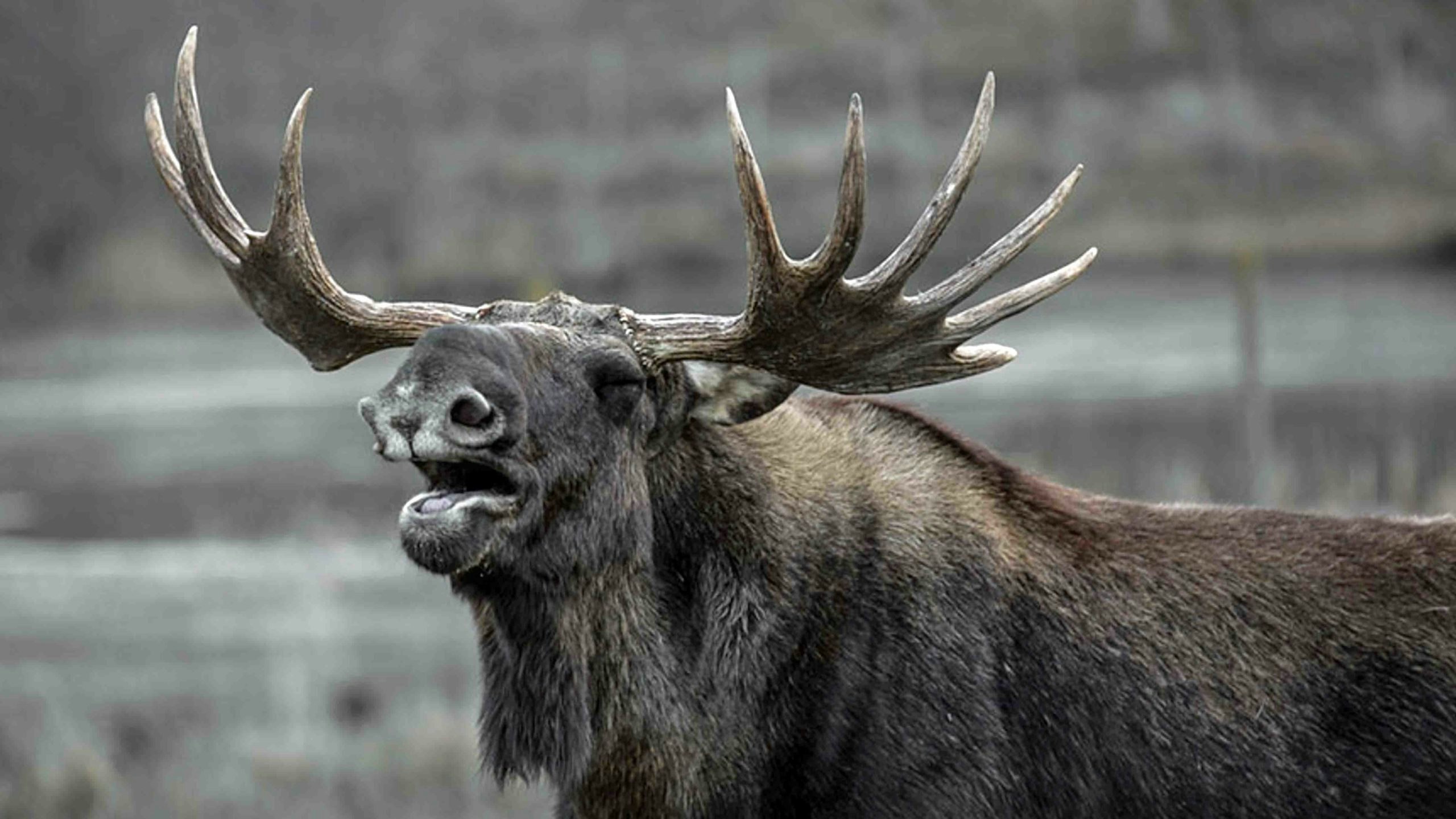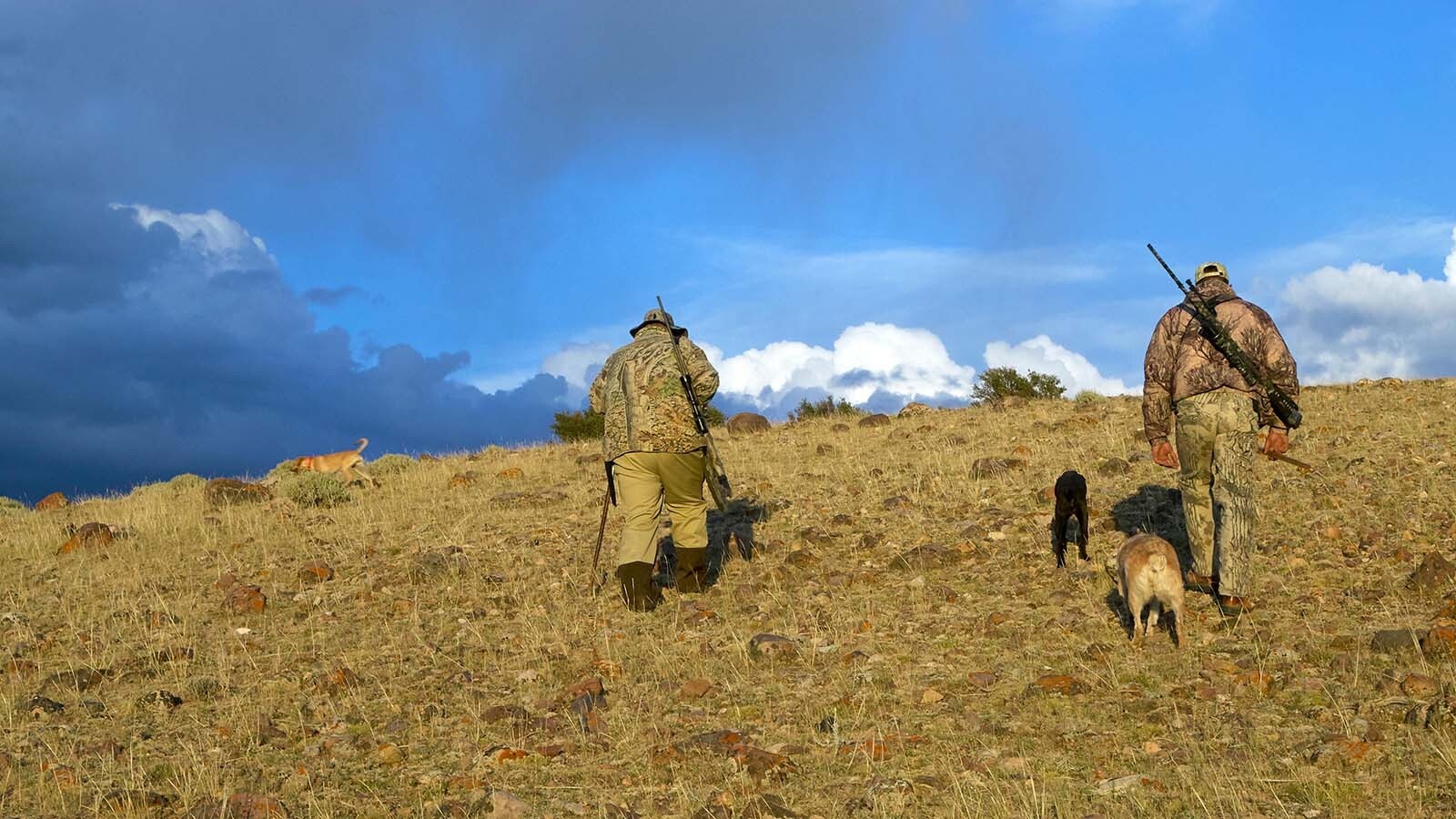Wyoming has long been known as a premier moose hunting destination in the Lower 48, but Colorado has surpassed it, at least in terms of sheer number of tags issued.
Wyoming issued 360 moose tags for the 2022 hunting season, according to the Wyoming Game and Fish Department.
“From 2010 to 2014, an average of 500 moose licenses were offered to hunters in Wyoming,” Doug Brimeyer, the deputy chief of Game and Fish’s wildlife division, told Cowboy State Daily. “During the last five years, an average of 322 licenses were issued to hunters.”
Some of that drop in Wyoming tags could be attributed to Colorado growing its reputation as a moose hunting destination.
Colorado has been issuing “500-600 moose tags per year,” Colorado Parks And Wildlife spokesman Joey Livingston told Cowboy State Daily.
Wyoming’s Decline Is Colorado’s Gain
Wyoming has roughly 3,000 moose, Brimeyer said.
Between 2015 and 2021, Colorado’s moose population grew from 2,500 to about 3,500, Livingston said.
Wolves and grizzly bears are to blame for the decline in Wyoming’s moose, state Sen. Larry Hicks, R-Baggs, told Cowboy State Daily.
Brimeyer said predators have played a role in Wyoming’s changing moose population, but other factors – such as drought and malnutrition – also are in play.
Colorado has at least one established wolf pack, in North Park, and plans to introduce more wolves by the end of 2023.
There are no plans to re-introduce grizzly bears to Colorado, which hasn’t had any verified reports of the big bruins since the 1970s, Livingston said.
Impact From Wolves And Griz
Wolves and grizzlies have devastated Wyoming’s moose population, Hicks said.
“We’ve lost the majority of our moose population in northwest Wyoming (to predation),” he said. “Wolves will eat anything they catch when they’re hungry, and moose in particular are vulnerable because they’re solitary.
“And some of the bears will specialize in hunting moose calves during the spring.
The moose population in the Bighorns, Snowy Mountains and elsewhere hasn’t been enough to make up for the losses in northwest Wyoming, Hicks added.
Hicks is a former member of the Wyoming Wildlife Task Force, a group appointed to consider a range of topics related to hunting and conservation. It met regularly throughout 2022 and had its last meeting in December.
The task force should by this spring have written recommendations to pass forward to the Wyoming Game and Fish Commission, which sets hunting policy in the state, Hicks said.
Other Factors
While predators have taken their toll, environmental factors have killed more moose in Wyoming, Brimeyer said.
“I managed the Jackson herd for over 20 years and was there as wolves moved south from YNP (Yellowstone National Park) and bear populations expanded in the region,” he said. “During the same time, we had prolonged drought, poor habitat conditions and lower reproduction.”
When forage starts to wane because of drought, things go badly for moose, Brimeyer said.
“Disease and malnutrition also contribute to a population’s ability to survive,” he said. “In the late 1990s, studies in Jackson documented moose mortality that was linked to poor nutrition.
“Finally, parasites such as winter ticks can also contribute to poor body condition of moose.”
Vulnerable Targets?
While Hicks noted that the tendency of moose to hang out alone can make them vulnerable to wolves and bears, Brimeyer said that also can play in the moose’s favor.
That’s because the abundance of other critters make those animals better targets of opportunity for predators, he said.
“Moose are relatively solitary and not encountered as often as elk and other ungulates that occur on the landscape at a higher density,” Hicks said.
Moose also are big and onery enough to make predators think twice about messing with them, Brimeyer said.
“A healthy adult moose is a formidable animal,” he said. “Predation happens. We have documented adult and calf moose that died as a result of predation. During my career I have come across adults and calf moose that died from bear and wolf predation.”
Wyoming Moose Helped Colorado Comeback
Moose have made a resounding comeback in Colorado, partly thanks to Wyoming, Livingston said.
By the early 1970s, there were hardly any left moose in Colorado, he said. Over-hunting in previous decades had nearly wiped them out.
In the late 1970s, game agents began re-introducing moose to Colorado, starting in North Park, according to the Parks and Wildlife website.
A dozen moose transplanted there in 1979 came from Wyoming.
Moose Hit The Streets In Colorado Springs
The largest concentrations of moose in Colorado are around North Park and the Grand Mesa area in the northwestern part of the state, Livingston said. The Pikes Peak area also has a thriving population.
“We get several moose almost every year coming down into the city (Colorado Springs),” he said. “We try to leave them alone as much as possible, but we do occasionally have to relocate one.”
As to whether Colorado’s growing wolf population could impact moose like the predators have in Wyoming, Livingston said that’s not yet much of a concern.
“That’s something we’re going to have to take into account in our management policies,” he said.
Wyoming Still Favored Hunting Ground
Meanwhile, Wyoming remains coveted territory for those who want to hunt moose in the Lower 48, Brimeyer said.
“Wyoming continues to be a stronghold for Shiras moose in the Lower 48 and demand remains high for an opportunity to hunt moose in our state,” he said.
Shiras moose are the subspecies that lives in the Lower 48 states. Though they are impressively huge and the largest members of the deer family here, they’re smaller than Alaska moose.
People are still lining up for Wyoming moose tags, Brimeyer said.
“Last year, 2,333 nonresidents applied for 71 nonresident licenses in Wyoming,” Brimeyer added. “During the same time, a total of 11,315 residents applied for 289 moose licenses.
“The chance of harvesting a mature bull remains very high across Wyoming and demand for licenses remains high.”
Hope For The Future
There’s reason to think Wyoming’s moose population will recover, Brimeyer said.
“Populations for the most part have been stable to slightly increasing in the Bighorns and Snowy Range,” he said. “I am optimistic given the calf-cow ratios we are seeing in populations across the state.
“In Jackson, managers observed over 50 calves per 100 cows and in Sublette the ratio was over 40 calves per 100 cows. In the Bighorns managers are observing over 50 calves per 100 cows.”
One-In-A-Lifetime Hunts
Moose are among Wyoming’s “Big Five” trophy game species. The others include bighorn sheep, bison, Rocky Mountain goats and – if and when federal protection is lifted – grizzlies.
As Brimeyer noted for moose, the odds are steep for drawing a tag for any of those species. They’re generally considered among hunters to be one-in-a-lifetime opportunities.





